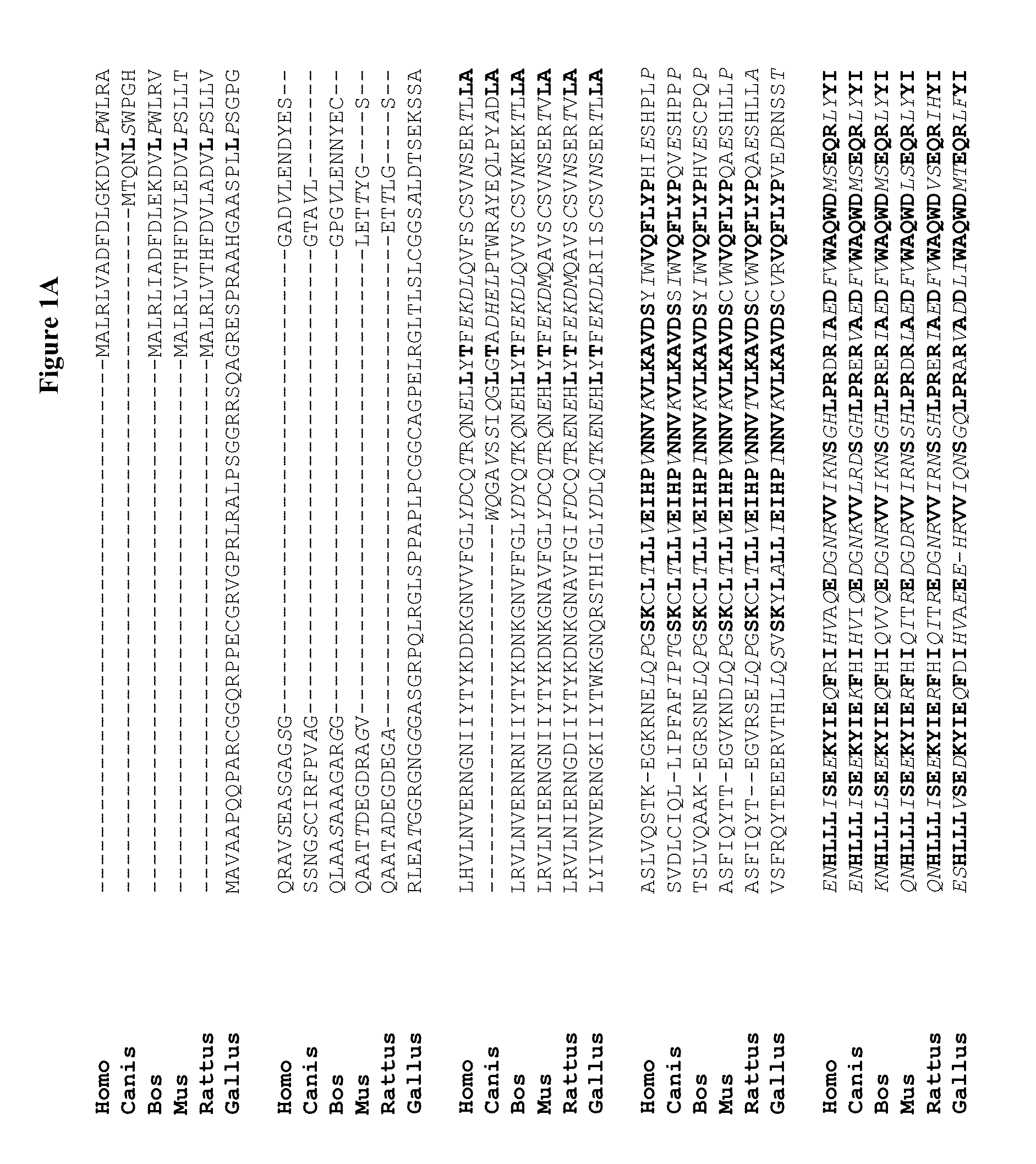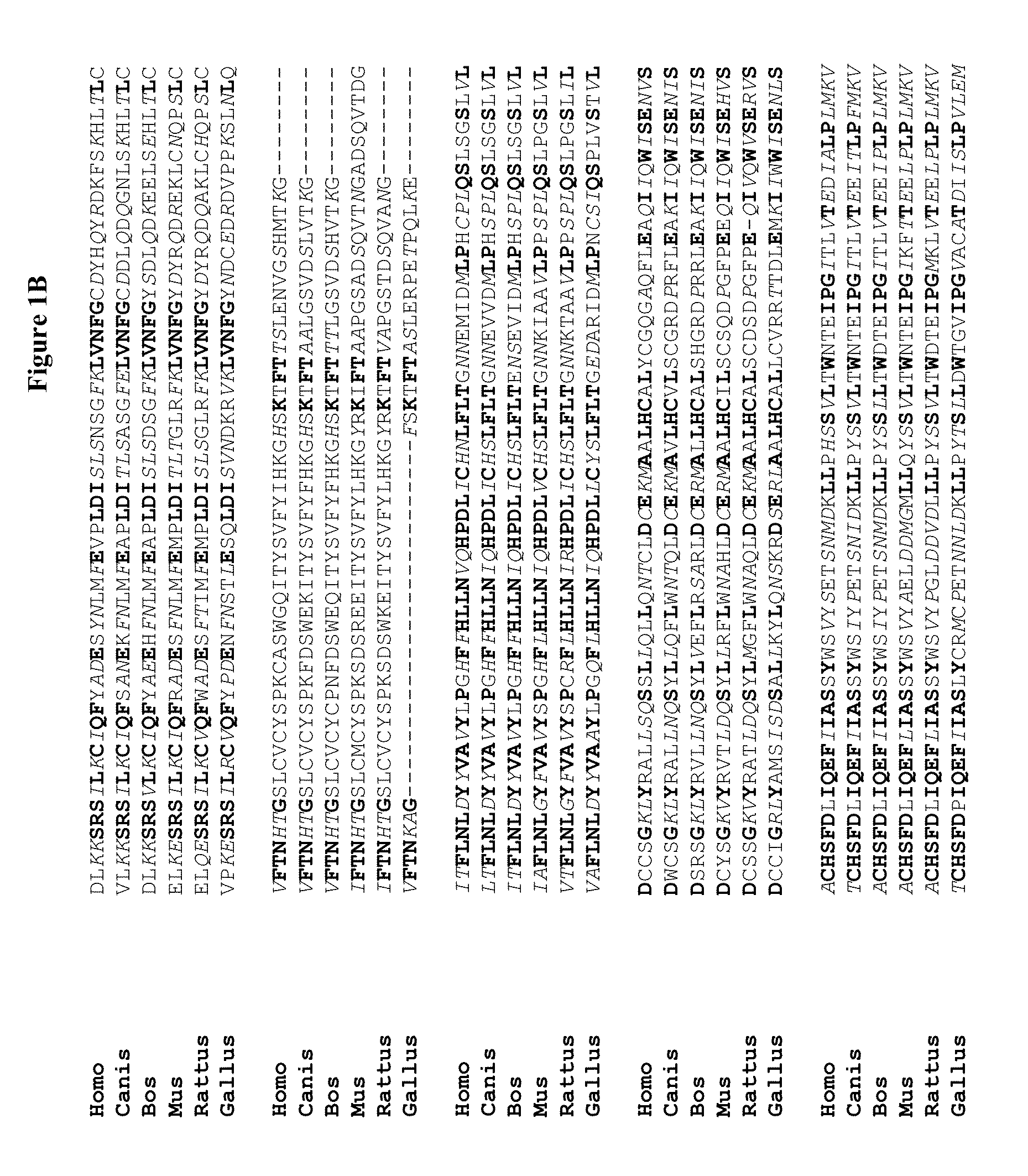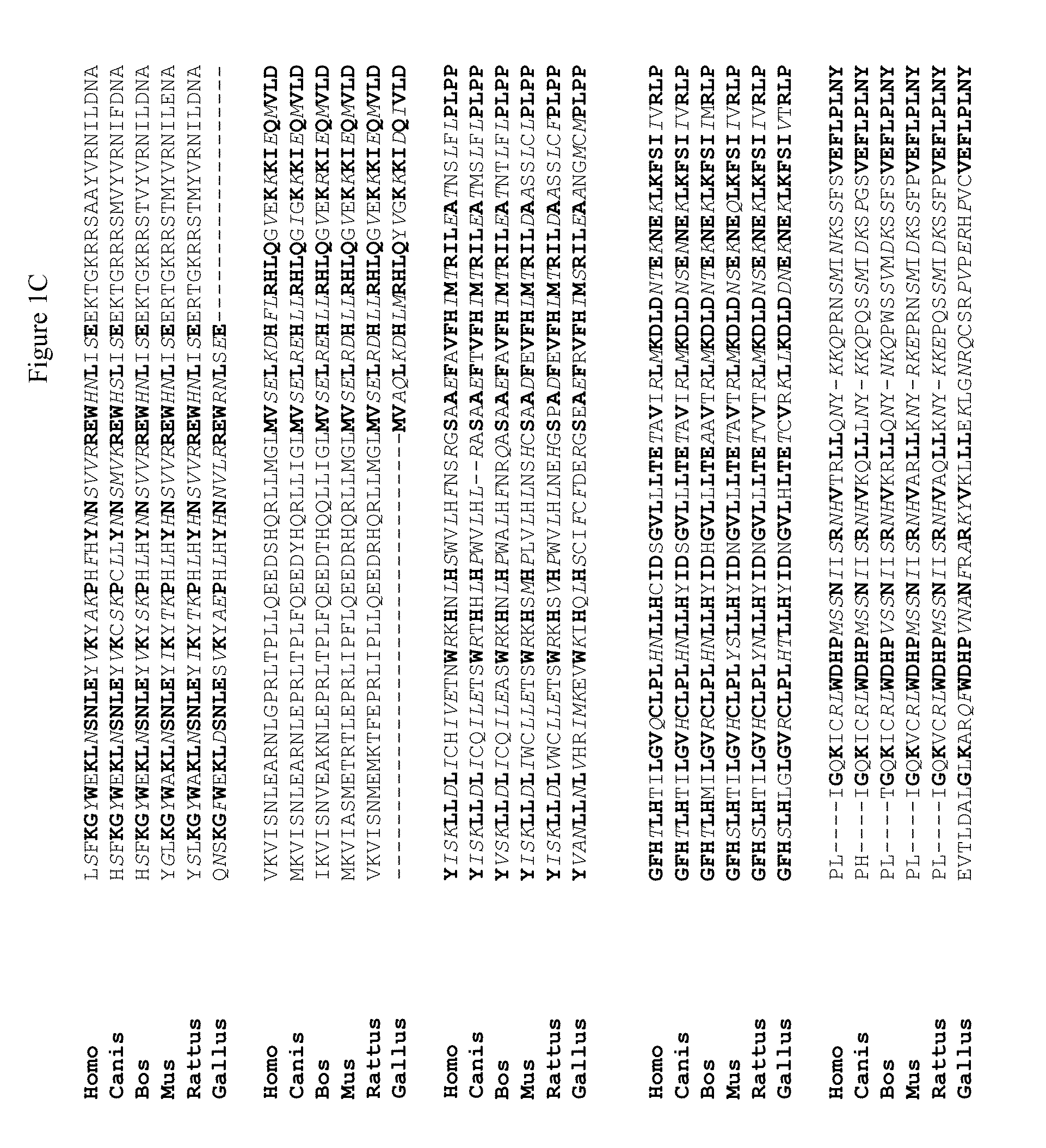Novel regulatory proteins and inhibitors
- Summary
- Abstract
- Description
- Claims
- Application Information
AI Technical Summary
Benefits of technology
Problems solved by technology
Method used
Image
Examples
example 1
Synthesis of Labeled Imatinib Derivatives
[0077]2,5-dioxopyrrolidin-1-yl 4-azido-2-hydroxybenzoate (NHS-ASA) is purchased from ProChem. Inc (Rockford, Ill.). 6-Methyl-N1-(4-(pyridin-3-yl)pyrimidin-2-yl)benzene-1,3-diamine and N-(4-methyl-3-(4-(pyridin-3-yl)pyrimidin-2-ylamino)phenyl)-4-(piperazin-1-ylmethyl)benzamide (N-desmethyl imatinib) are purchased from ChemPacific Inc (Baltimore, Md.). 2,5-dioxopyrrolidin-1-yl 5-((3aS,4S,6aR)-2-oxo-hexahydro-1H-thieno[3,4-d]imidazol-4-yl)pentanoate (Biotin-OSu), N-(chloro(dimethylamino)methylene)-N-methylmethanaminium hexafluorophosphate (TCFH), trifluoroacetic acid (TFA), 1H-benzo[d][1,2,3]triazol-1-ol (HOBt) and N,N-diisopropylethyl amine (DIPEA) are purchased from Sigma-Aldrich (St. Louis, Mo.). Tert-butyl 2-(piperazin-1-yl)ethylcarbamate is purchased from Astatech Inc (Bristol, Pa.).
[0078](a) Synthesis and kinase profiling of biotin-imatinib (active and inactive form): Two forms of biotin imatinib are synthesized, one having the characteris...
example 2
Immobilization of Imatinib and Affinity Purification
[0084]For affinity purification, HEK293 cells are homogenized with 10 mM Hepes, 250 mM sucrose, pH 7.4 in the presence of protease inhibitors. After cell debris is cleared by centrifugation at 1,000 g for 5 mins, the supernatant is subjected to ultracentrifugation at 100,000 g for 1 h. The membrane pellet is then solubilized on ice in 50 mM Hepes, 150 mM NaCl, 5 mM MgCl2, 5 mM CaCl2, and 1% CHAPSO containing protease inhibitors (Roche Inc. cat#04 693 132 001) for 1 h and subject to ultracentrifugation for 1 h at 100,000 g. The soluble membrane extracts are incubated with Myonen™ streptavidin T1 beads (cat#656-01, Invitrogen) containing bound active biotin-imatinib for 3 hr at 4° C. Subsequently, the beads are washed three times with lysate buffer. Bound proteins are eluted with tricine SDS-PAGE sample buffer and separated on 10-20% tris-tricine gels. For immunoblotting, the gel is then transferred to PVDF membrane and probed with γ...
example 3
In Vitro and Intact Cell Photolabeling
[0087]For in vitro labeling, membrane pellets are prepared as described above and resuspended in 50 mM Hepes, pH 7.4, 150 mM NaCl, 5 mM MgCl2, 5 mM CaCl2. Resuspended membranes are incubated with 20 nM 125I-G01 for 3 hr at 4° C. prior to photolysis using a compact UV lamp (4 watt, model UVGL-25, UVP Inc.) at 254 nM for 2 mins. To examine labeling specificity, 50 μM imatinib is added to a parallel assay. After photolysis, membranes are pelleted by ultracentrifugation at 100,000 g for 1 h and solubilized with 50 mM Hepes, 150 mM NaCl, 1% CHAPSO, 5 mM MgCl2, 5 mM CaCl2. The supernatant is pre-cleared with protein G plus / protein A beads (EMD Biosciences, cat#IP05) for 30 min and proteins are precipitated using PS1 antibody (EMD Biosciences, cat#529592) coupled to protein G plus / protein A beads for 2 h before washing with lysate buffer 4 times. The bound material is eluted in SDS-tricine sample buffer and separated using 10-20% Tris-tricine gels, fo...
PUM
| Property | Measurement | Unit |
|---|---|---|
| Fraction | aaaaa | aaaaa |
| Atomic weight | aaaaa | aaaaa |
| Immunogenicity | aaaaa | aaaaa |
Abstract
Description
Claims
Application Information
 Login to View More
Login to View More - R&D
- Intellectual Property
- Life Sciences
- Materials
- Tech Scout
- Unparalleled Data Quality
- Higher Quality Content
- 60% Fewer Hallucinations
Browse by: Latest US Patents, China's latest patents, Technical Efficacy Thesaurus, Application Domain, Technology Topic, Popular Technical Reports.
© 2025 PatSnap. All rights reserved.Legal|Privacy policy|Modern Slavery Act Transparency Statement|Sitemap|About US| Contact US: help@patsnap.com



